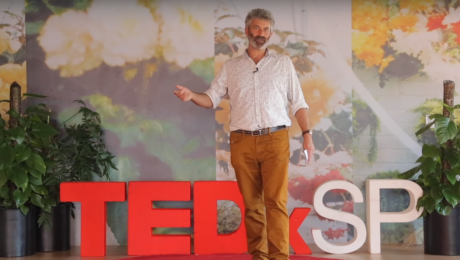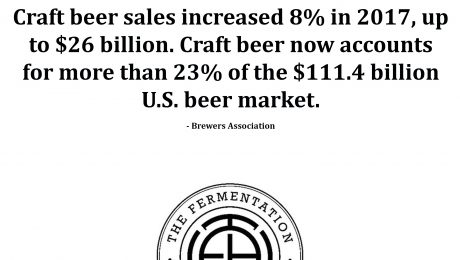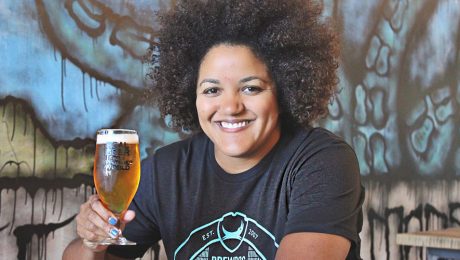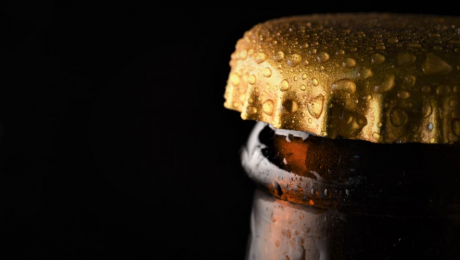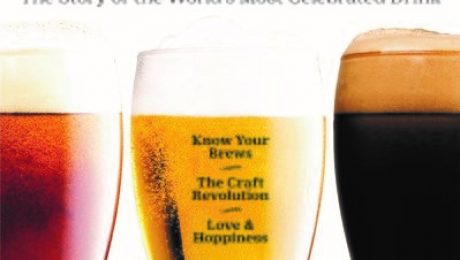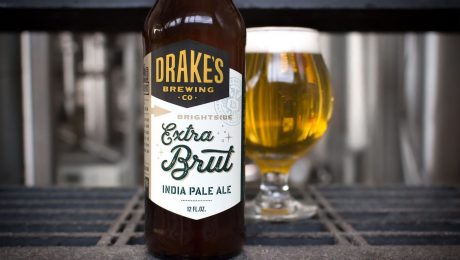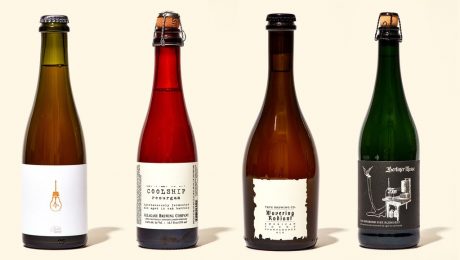Fermentation Reigns: Sour Taking Over Our Tastebuds
Sour is taking over our taste buds. A New York Times Style Magazine article explores how sour flavor is “dominating our dining discourse.” The article lists fermenting, kombucha, sourdough, kimchi, drinking vinegar, cocktail shrubs and sour beer as evidence of sour’s ascent in American’s palates. Samin Nosrat, author of the book of cohost of the Netflix series both titled “Salt, Fat, Acid, Heat,” says acid is one of the building blocks of flavor and makes our mouth water. “...your body gets confused — maybe I want more?”
Read more (New York Times Style Magazine)
- Published in Food & Flavor
Sandor Katz on the Fermentation Phenomenon
It’s absurd to call fermentation a new food trend, says Sandor Ellix Katz, author of “The Art of Fermentation” and “Wild Fermentation.” Fermenting practices date back to early man. But, after decades of active pasteurization and a war on bacteria, fermentation is experiencing an awareness as a food phenomenon, Katz says.
Katz – who calls himself Sandorkraut, the fermentation revivalist – spoke at a TEDx Talk in Sao Paulo on wild fermentation and the power of bacteria. Coffee, bread, cheese, beer, wine – Katz points to these as examples of “the greatest delicacies that people around the world enjoy, products of fermentation that have never gone out of style and have not recently just come into style.”
No one needs to master biology or study microorganisms to practice fermentation, Katz stresses. Before microbiology became a field, fermentation historically was viewed as mysterious or mythical because no one understood the mechanisms of it. He adds: “I cannot find one single example of a culinary tradition anywhere the does not incorporate fermentation.”
Microbiology has illuminated and harmed fermentation. For decades, the information surrounding bacteria and microorganisms was negative. People were taught the dangers of bacteria and disease – and grew to fear fermentation. But discoveries in microbiology also found that everything we eat, plant and animal, is populated by microorganisms. All life is descended and created from bacteria.
“In a way, we’re bacteria super structures,” Katz said. “For the first time, from the scientific analysis, we began to understand that fermentation is the transformative action of microorganisms.”
Fermentation often gets a bad reputation because people consider fermenting the process rotten or spoiled food. But fermentation is manipulating environmental conditions to encourage the growth of good organisms and discourage the growth of bad organisms, Katz explains.
“Fermentation is making food that is more stable than the raw product of agriculture that we began with,” Katz says. “We’re creating something that is more delicious, we’re creating something that is more easily digestible, we’re creating something where some toxic compound in the food and the otherwise dangerous food is made safe.”
For the first time in history, science is revealing the benefit of eating the live bacteria in fermented foods. The prevalence of antibiotic drugs, antibacterial cleaning products and chlorinated water now kill all bacteria in food. This war on bacteria narrows the diversity of bacteria in our intestines, Katz points out.
“If they were to kill all those microorganisms, we couldn’t possibly exist because we rely on those microorganisms for our digestion, for our immune system, our ability to withstand disease our brain chemistry,” he says. “Yet this chemical exposure…narrows biodiversity that we have inside of us.”
Katz focuses his work on public education of fermentation, helping shed light on its safety and effectiveness. More people today are seeking fermented foods because of the growing recognition of the benefits fermentation, Katz says. He teaches that the greatest benefit of fermented products are the bacteria themselves. Eating fermented foods – foods that haven’t been cooked or heat processed, since that kills the bacteria – restores the biodiversity in our intestines.
“In addition to being this important mode of transformation of food and beverages which enables people to make effective use of the food resources that are available to them, fermentation is also an engine of social change. And all of us are the starter cultures,” Katz said.
- Published in Food & Flavor, Science
Beer Wars: MillersCoors Sues Anheuser-Busch Over Fermentation Practices
There are beer wars over fermentation practices between two of the country’s biggest beer brands. MillersCoors is suing Anheuser-Busch over a Bud Light Super Bowl ad that shamed Miller Lite and Coors Light beers for using corn syrup during their brewing process. The controversial ad shows the Bud Light King trying to figure out what to do with a giant corn syrup barrel delivered to their castle by mistake. The Bud Light knights attempt to deliver the barrel to both the Miller Lite and Coors Lite castle, since both beers have corn syrup in their ingredients. MillersCoors says the ad is false advertising. The brand says corn syrup is used in brewing to aid the fermentation process, but their final product does not include corn syrup. MillerCoors also alleges that Anheuser-Busch is playing on consumer’s fears of corn syrup. Focus groups show consumers view no difference between corn syrup and high-fructose corn syrup. Dietitians say corn syrup is not unhealthy in brewing, but high-fructose corn syrup is an additive linked to obesity. The lawsuit also alleges Anheuser-Busch also uses corn syrup as a fermentation aid in some of the brand’s other drinks (Stella Artois Cidre and Bud Ice). MillerCoors is asking Bud Light to stop the ad immediately and pay all of MillerCoors’ legal fees.
Read more (CNBC)
- Published in Science
Craft Beer Sales Up 8% or $26 Billion
Craft beer sales increased 8% in 2017, up to $26 billion. Craft beer now accounts for more than 23% of the $111.4 billion U.S. beer market. – Brewers Association
- Published in Business
Female Leaders Few in Craft Beer Industry
Female leadership is sparse in the craft beer industry – just 17% are CEOs and 21% are executives. Tanisha “T” Robinson talks about breaking the glass ceiling as the female CEO of BrewDog’s U.S. operations. Robinson says there is a huge demographic opportunity to draw in more women and people of color to the industry. “If craft brewers could figure out how to authentically connect to women and people of color, they could sell a lot more beer,” she said. “That’s something that I highly doubt most craft brewers are talking about or thinking about, but it’s something that is important to me — that craft beer should be open and accessible and authentic and approachable for everyone.” She says partnerships, events and collaborations are a great step.
Read more (MarketWatch) (Photo: BrewDog)
- Published in Business
New Brewery Invention Could Detect Wild Yeast Contaminant
Two scientists have a patent pending on a brewery invention that detects the wild yeast contaminant Saccharomyces cerevisiae var. diastaticus. The wild yeast causes secondary fermentation in beer production, fermenting unfermentable sugars and overcarbonating brews. A contamination costs brewers millions in recalled product, lost sales and decreased market share. The patent is by a University of Sciences director and his 20-year-old undergrad researcher. The microbiological medium would be marketed for professional and home brewers.
Read more (Philadelphia Business Journal)
- Published in Science
TIME Magazine’s Latest Cover Star: Beer
The latest special edition of TIME magazine featured a familiar cover star: beer. In “The Story of the World’s Most Celebrated Drink,” TIME attributes the drink’s popularity largely to a social factor. People like to drink beer in social settings – it has far less alcohol, it’s a staple at sporting events and people who frequent pubs have a wider social circle. And great news for local, craft brewers – today, beer drinkers prefer local breweries over bars. (TIME) https://goo.gl/ra98Bk
- Published in Business
Brut IPAs Major Brewing Buzz – Will the Movement Stick?
Are brut IPAs a trend that will fade or a movement that will stick? Started in San Francisco, brut IPAs are a beer style that is dry, crisp and heavily carbonated like champagne. The unique flavor is thanks to the fermentation process, where an amyloglucosidase enzyme is used to “ferment sugars that wouldn’t break down with yeast alone, which leaves them totally dry,” according to the LA Times. Brewers and hopheads are excited about brut IPAs, leading to many breweries offering brut IPAs on their menu.
Read more (LA Times)
- Published in Business
Should Big Beer Brands Be Granted Barley Patents?
Should big beer brands be allowed to patent barley? In Europe, a major win for a group of small brewers who were suing Heineken and Carlsberg. The European Patent Office allowed the brewing giants to patent several kinds of barley. Heineken and Carlsberg say they invented the barley strains. Critics of the patent, though, say the barley naturally occurs and it’s based on fermenting science that brewers have used for thousands of years. In the first of three hearings, the patent office says the big beer brands could only have patents to barley with a specific genetic mutation.
Read more (The Times)
- Published in Business
More Brewers Using Spontaneous Fermentation
Spontaneous fermentation is seeing a big surge among breweries. It’s a method beer, cider, wine and liquor makers should consider because spontaneous fermentation is a sign that the brewer is confident in their technique, willing to trust the uncontrolled aspects of the fermentation process and having fun, says Bon Appetit magazine. Also known as hands-off, natural or traditional fermentation, it’s the oldest form of fermentation, used before fermentation could be controlled and regulated.
Read more (Bon Appetit)


